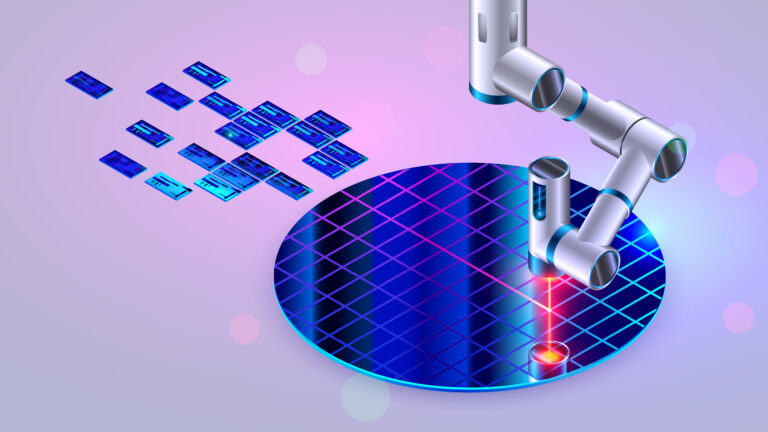If the word graphene tickled something in the back of your mind, there’s a good chance that familiarity was first planted by an episode of Beyond Tomorrow.
The magic metal: Why hasn’t graphene lived up to the hype?

Produced by ABC back in the late 80s (originally airing under the name Beyond 2000 before being updated for obvious reasons), the series was a breed of science and tech journalism that doesn’t exist in the same way nowadays.
Each episode was a grab-bag of interviews and investigations into the tech of tomorrow, bringing with it glimpses of everything from flying cars to smart homes and virtual reality. I was too young to understand or appreciate how much of this so-called future was hype, smoke and mirrors but just the right age to find it all very enticing.
Graphene is the kind of futuristic breakthrough that Beyond Tomorrow would have covered in one form or another. Back in 2004, when it was first discovered, the supermaterial was hailed as the next big thing. It was lighter than paper, stronger than steel and conductive enough to supplant silicon.
Almost 20 years have passed and just about none of those ambitious applications have come to pass. Naturally, you have to wonder why. Of course, to answer that question, you have to ask another one first.
Just what is graphene, anyway?
The short answer is that graphene is a form (or allotrope) of carbon. You don’t need to have paid that much attention in high school to know that different chemical elements come in different forms.
Graphene is one form of carbon. Diamonds and graphite are another. The big difference between graphene and these and its siblings is that it's so thin that it borders on two-dimensional. It’s essentially made up of a single layer of carbon atoms laid out in a hexagonal pattern.
That layout – called a lattice nanostructure – is a big part of what makes graphene special but for all its exceptional properties, the supermaterial isn’t exactly rare or hard to come by. It’s not mined in a cave or produced using some sort of complex chemical reaction. You just take some carbon atoms – usually pulled from a piece of graphite – and flatten them into the honeycomb-like shape I mentioned before. It’s so easy to make that you could probably grab a few grams all by yourself without too much trouble.

Far from humble, graphene is often billed as the coolest material known to mankind. That slogan holds up to a surprising amount of scrutiny. For one, it’s incredibly lightweight. This is mostly owed to the fact that it’s only a single atom tall. For comparison, a single square metre of paper is about 1000 heavier than a square metre of graphene.
Graphene is also much stronger than you’d expect. With a tensile strength of 130,000,000,000 Pascals, it’s the strongest material ever discovered in its purest form. If being lighter than paper and stronger than steel wasn’t enough of a claim to fame, graphene is also extremely flexible, resistant to high temperatures and conductive enough that it could function as a substitute for silicon transistors.
Given all of the above, it’s no surprise that graphene has made the occasional appearance in the world of consumer electronics. Most consumers love a lighter gadget and the idea of a stronger one that lasts them longer holds a similar kind of appeal.
You don’t have to think too hard to come up with a few ways that graphene could be used to enhance existing consumer electronics like smartphones, tablets and smartwatches. If the back of your iPhone was made of pure graphene rather than glass, it’d probably be a lot tougher than even the titanium found on the new iPhone 15 Pro and iPhone 15 Pro Max.
Back in 2017, Samsung went so far as to put together a prototype for a unique graphene-based battery system that made use of the material's conductive qualities to offer a 45% increase in capacity and five times faster charging speeds than a typical lithium-ion battery might.
That’s just the obvious stuff though. For many tech brands and manufacturers, one of the most promising potential applications for graphene is as an alternative to traditional silicon transistors. Compared to traditional silicon transitions, graphene transistors could be thinner, faster and better able to handle the thermal demands of higher clock speeds.
The applications of graphene are so obvious and numerous that you have to ask why more tech titans haven’t gone all-in on the material in the twenty years since it was discovered.
According to former science journalist and current biochemist at Curtin University, Thomas Crow, there are just as many reasons for this as there are possible applications for graphene.
“The simplest is that silicon has been known for roughly 200 years, while graphene has been around for roughly 20 years. This means that the fundamental research (fully characterising the properties and finding applications for them) of graphene is well behind silicon,” he said.
In short, the history of consumer electronics has been built on silicon. Naturally, all of the processes in place are built on that same foundation. Shifting away from that status quo is no small feat.
According to Crow, that’s why we don't see graphene more generally in areas where it could feasibly replace silicon.
“Changing production processes to use graphene means changing all of your machinery, retraining your people and redesigning your products. That's an incredibly expensive proposition, so manufacturers won't do that unless there is a significant and immediate financial benefit. “
Crow emphasised the differences between graphene and silicon.

Graphene is easy to make, but hard to manufacture at the kind of volume it would need to be for commercial and consumer applications in any sort of mainstream market because the infrastructure just isn’t there.
In addition, Crow was quick to point out that many of the early promises researchers were touting about graphene were based on deposited and exfoliated graphene - which often ends up with small defects upon its surface.
This phenomenon is referred to as scale edge disorder and can affect the passage of electrons through the circuit. Avoiding it means using more expensive techniques to create graphene, which further eats away at its potential as a silicon substitute.
Despite the advantages that the material can offer, graphene is more troublesome than it is worth. As a raw material, it wins out over the likes of silicon. However, that edge only holds until you factor in the lower cost that mature material silicon gets you.
Even if graphene has gotten cheaper over the last few years, it’s still relatively expensive as a product of its comparably limited supply and demand.
Then, there’s the issue of its conductivity.
Crow noted that graphene is also a zero-gap semiconductor, “which means that pure graphene is actually too conductive to be used as a semiconductor or transistor, where we want to be able to switch the current on and off, to generate binary signals.”
While you can get around this by doping graphene with silicon or germanium, Crow said that pure graphene cannot simply replace silicon.
That might explain why whenever graphene does turn up in consumer-grade gadgets, it’s usually not in a pure form. Graphene can still provide some benefits when used in small quantities. However, the benefits you’re getting from doing so are a fraction of what they could be. You’re missing out on most of what makes it compelling in the first place.
When you look at things from a distance, it’s easy to feel like our modern-day gadgets are sleeping on the benefits that graphene could provide. After a while, it starts to feel like the real enemy here isn’t a lack of awareness but a lack of will.
Discovering a wonder material like this one might seem like it happens overnight, but the lasting change that graphene could bring was always going to be a slow burn.
Graphene is better in many of the ways that count, but worse in the one that usually matters the most. It’s not cheap. The consumer electronics industry churns through components at a velocity that graphene could help alleviate if companies and consumers were willing to front that cost.
Everyone wants their phone to be lighter and built to last. Nobody wants to be the one to pay more for it. That’s the part of the story that Beyond Tomorrow could never quite manage to convey. When we wonder about wonder materials like graphene, we often miss the forest for the trees and if you spend all your time and attention on the way that tech could change the world, it’s easy to overlook the reason why it is the way it is already.
The tech industry isn’t your friend and for all that the marketing preaches, the number one priority is never to make your life better or easier. Above everything else, it’s here to make money. Building out a product line around graphene might make for a better product, but a bad business decision.
It’s easy to look back at the past two decades and mourn the gulf between the world that graphene promised and the one that we’ve got today. The harder truth is that no miracle metal can bend capitalism to its will.
Graphene might be stronger than steel and lighter than paper, but even it cannot change an industry that does not want to be changed.

You can’t watch it all, so we watch it for you.
By signing up, you agree to our Terms of Use and Privacy Policy.
Related Articles




